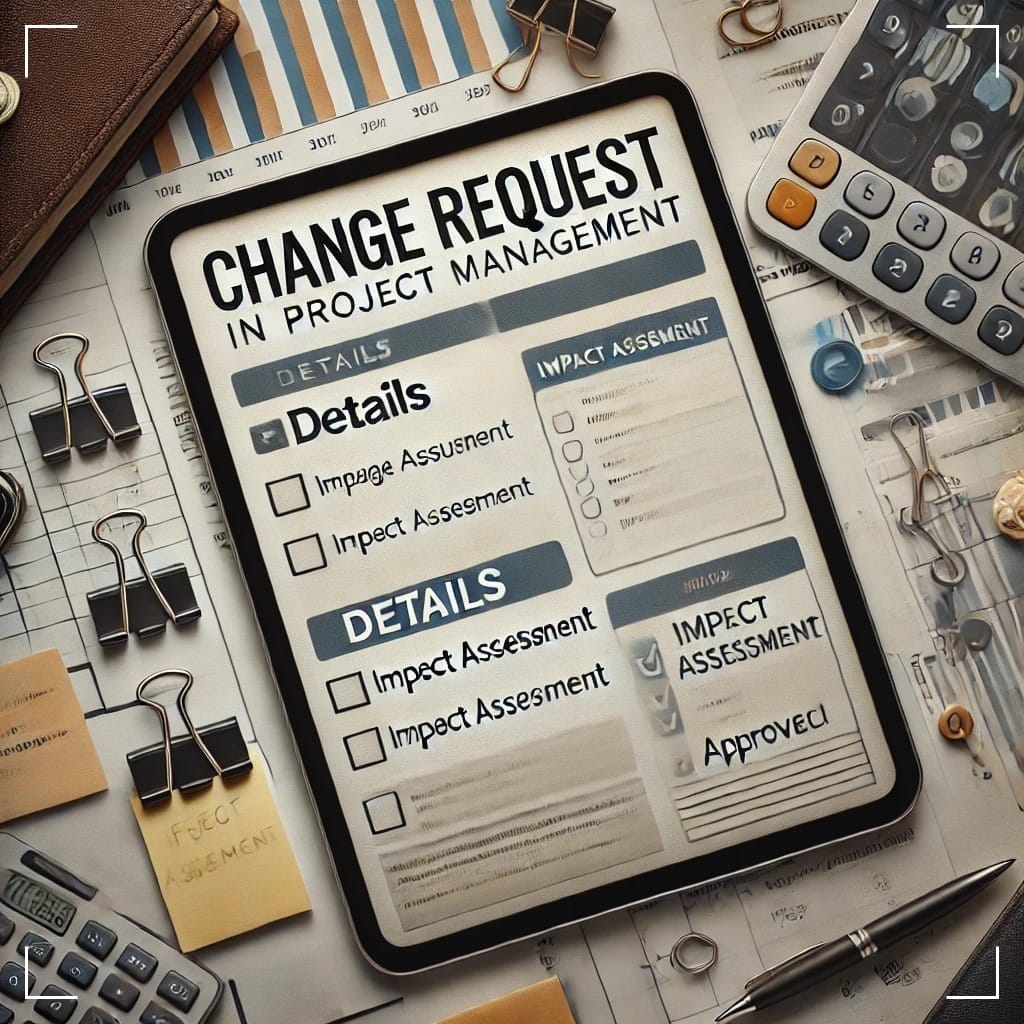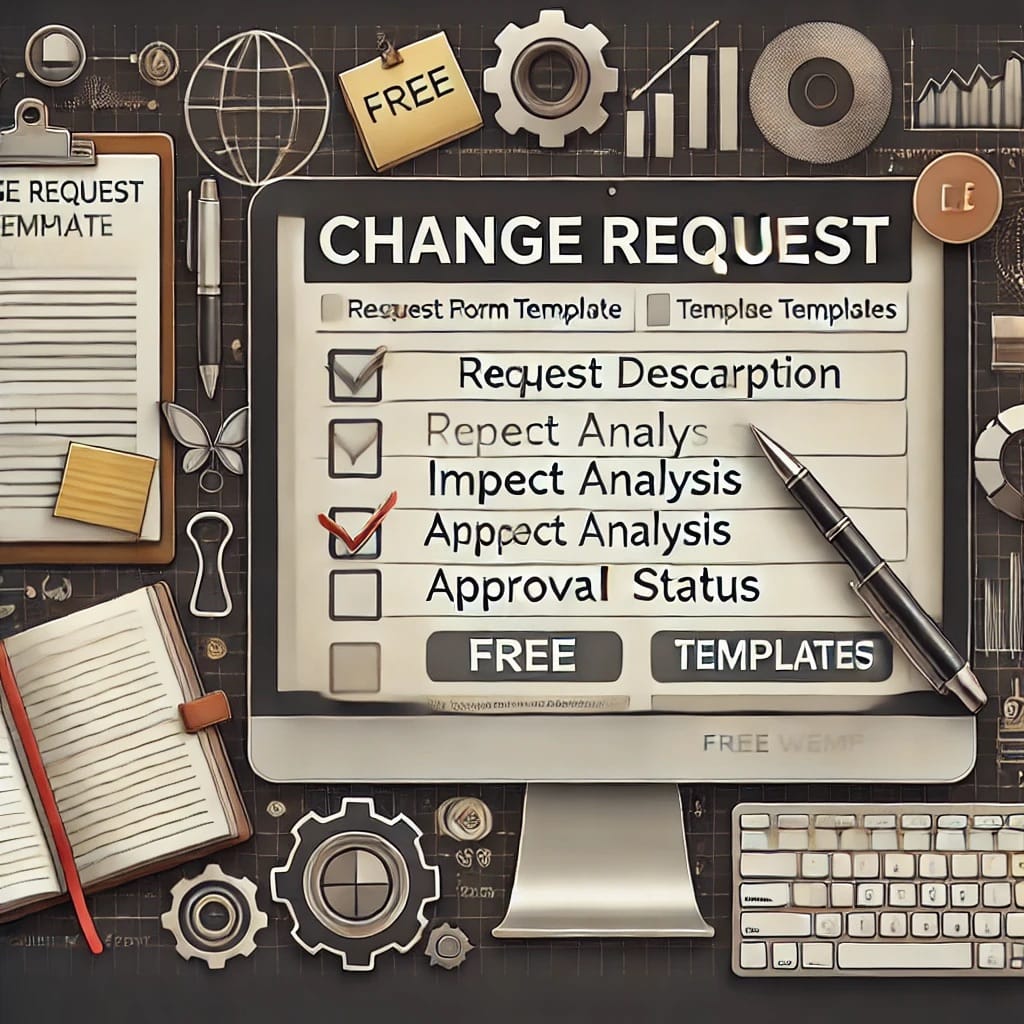Change Requests in Project Management: Free Word Templates

In project management, managing change requests is essential for maintaining the integrity of project goals and deliverables. Whether changes arise from scope adjustments, new priorities, or unforeseen challenges, having a structured change management process helps teams track and control changes efficiently. Change requests allow project managers to document, assess, and approve modifications, ensuring all project stakeholders stay aligned.

Using standardized change request templates makes it easier to document changes, outline impact assessments, and track approvals. This blog covers the key elements of managing change requests, including practical tips and free Microsoft Word templates to help you implement a smooth, effective change management process.
What Are Change Requests?
A change request is a formal document used in project management to propose changes to a project’s scope, timeline, budget, or other critical elements. Change requests are typically initiated when project requirements shift or new challenges arise, impacting deliverables or timelines. By documenting change requests, teams can carefully review the modification’s potential effects on cost, resources, and risk.
How Change Requests Work
The change request process generally follows a series of steps to ensure all changes are thoroughly reviewed, approved, and tracked:
- Submission: Team members or stakeholders submit a change request form, detailing the nature of the proposed change and its expected impact.
- Review: The project manager or change control board (CCB) evaluates the request, analyzing its potential effect on project scope, timeline, resources, and costs.
- Impact Assessment: The team assesses the change’s impact, examining how it aligns with project goals and deliverables.
- Approval: The decision-making body (often the CCB or project sponsors) reviews the assessment and either approves, rejects, or requests modifications to the change.
- Implementation: If approved, the change is communicated to all relevant stakeholders, and the project plan is updated accordingly.
- Tracking and Documentation: The change is documented and tracked throughout the project, ensuring transparency and accountability.
This structured process helps project managers maintain control over deliverables while addressing evolving project requirements effectively.
Types of Change Requests
Different types of change requests exist, each tailored to unique project needs. Here are the four main categories:
1. Normal Change
A Normal Change request typically involves significant operational or process changes, usually submitted when modifications are essential but not urgent. Examples include updates to project technology, resource allocations, or budget adjustments.
2. Standard Change
A Standard Change request refers to low-risk, routine changes that don’t require detailed impact assessments. These are often pre-approved processes, like minor equipment adjustments or small resource reassignments, commonly used in projects with predictable modifications.
3. Major Change
A Major Change request impacts critical aspects of the project, often requiring significant time and budget considerations. This type involves extensive assessment and approval due to its high impact on deliverables, such as changing the project’s entire approach or major resource reallocation.
4. Emergency Change
Emergency Changes occur when urgent issues arise, such as system breakdowns, data breaches, or unforeseen environmental changes, requiring immediate action. These requests usually bypass standard approval processes due to their urgency, ensuring prompt action to mitigate potential damage.
Steps for Effective Change Management
Implementing a successful change management process requires a clear plan to ensure all changes are assessed, approved, and communicated. Here’s a breakdown of essential steps for managing change requests:
Step 1: Define the Scope of the Change
Start by thoroughly reviewing the change’s scope, including all impacted tasks, team members, resources, and deadlines. Clearly defining the change scope helps establish its potential effect on project deliverables and future planning.
Step 2: Assess the Impact
Impact assessment evaluates the proposed change’s influence on the project scope, timeline, resources, and budget. At this stage, the project manager or team assesses how the change might affect risk factors, overall project quality, and alignment with business objectives.
Step 3: Seek Approval
For efficient decision-making, categorize changes based on their importance, risk level, and financial impact. Depending on the change type, approval may require input from department heads, the change control board, or project sponsors.
Step 4: Communicate and Implement
After approval, communicate the change details, adjustments, and timeline to all stakeholders. This ensures that everyone involved has a clear understanding of the updated goals, responsibilities, and requirements.
Step 5: Track and Document
Document each change request, including assessment details, approval status, and implementation results. Tracking change requests provides a comprehensive record of modifications, promoting transparency and accountability across the project.
Free Change Request Templates for Microsoft Word
Using a change request template can streamline your project’s change management process, helping you organize information and track modifications easily. Here are some free Microsoft Word templates:
1. One-Page Change Request Template
This concise template includes essential details like project name, description, impact, and approval. It’s ideal for projects requiring quick, easy-to-read updates.
Features:
- Basic form fields for project and change details
- Room for approval signatures
- Suitable for small to mid-sized projects
2. Detailed Change Request Template
A more in-depth template designed for complex projects, this option includes multiple-choice fields for categorizing change type, priority level, and impact area. The additional sections make tracking changes more structured, improving clarity for large teams.
Features:
- Includes sections for priority, impact, and risk level
- Detailed tracking for larger, multi-phase projects
- Great for projects with frequent changes requiring thorough documentation
3. Simple Change Request Template
This template focuses on clarity, offering a straightforward layout for change description, reasoning, and implementation. It’s suitable for teams wanting an easy-to-use document that avoids unnecessary complexity.
Features:
- Clear layout with essential sections for change description
- Basic fields for assessment, implementation, and tracking
- Ideal for quick submissions in small projects
Best Practices for Writing an Effective Change Request
When creating a change request, keep in mind the following best practices to ensure clarity and efficiency:
- Focus on Visual Appeal: A well-structured document is easier to read and interpret. Use bold headers, bullet points, and white space for readability.
- Tailor Content for the Audience: Ensure your language, tone, and details match the needs of the client or project stakeholders.
- Be Concise and Impactful: Each section should be brief but informative. Avoid jargon and prioritize clarity over technical language.
Where to Get Microsoft Word Templates
Microsoft Word offers an array of customizable templates suitable for change request forms and other project management documents. If you need a reliable Office suite, RoyalCDKeys offers budget-friendly Microsoft Office licenses, providing access to Word, Excel, and PowerPoint at competitive prices. With Office, you’ll find it easy to download, edit, and tailor templates to fit your project’s unique requirements.
Conclusion
Incorporating a structured change request process into your project management strategy allows for smoother workflows, better communication, and enhanced project control. From standard changes to emergency adjustments, a well-organized change request system ensures that teams can adapt to new requirements without compromising project goals.
With the free templates available and best practices for effective change management, you’ll have the tools needed to handle changes with confidence, transparency, and efficiency. Download a template today and start optimizing your project change management process for success.
Source: How to Manage and Create a Change Request [Templates Included]
Read also our last article: Master Time Blocking: Organize Your Business Effectively





